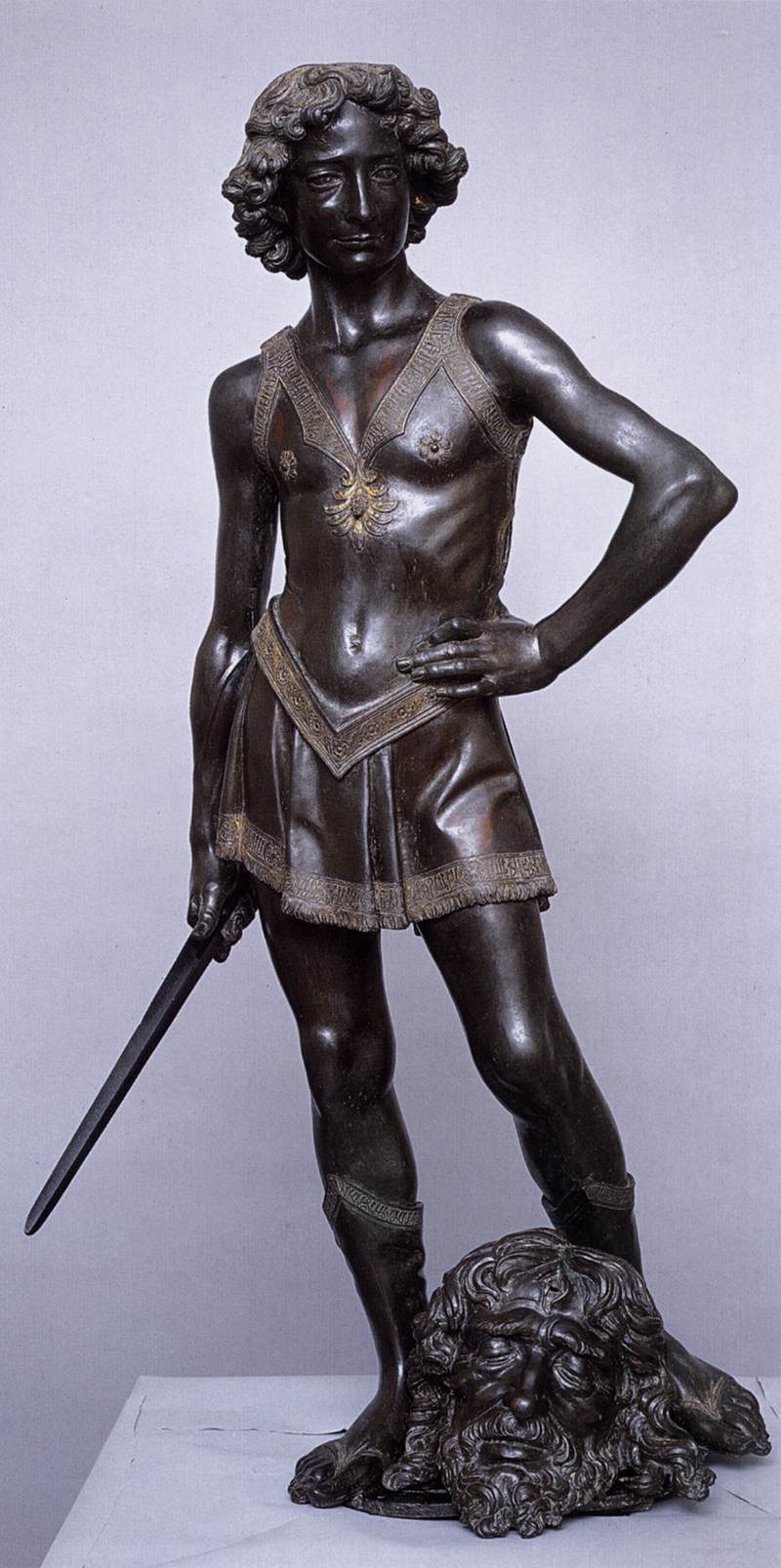Remember to click on the artwork!

Andrea del Verrochio (1435-1488) or Andrea di Michele di Francesco de’ Cioni, was an Italian painter, sculptor and goldsmith with an important workshop in Florence and is ranked second only to Donatello of the Italian sculptors of the early Renaissance. He is also known for the fact that among his pupils was Leonardo da Vinci.
There is not much extant information about Verrochio’s life. His father worked as a tile and brick mason before becoming a tax collector. Verrochio He never married but had to support his brothers and sisters and their children. It is know that he was trained as a goldsmith with Giuliano Verrocchi, whose last name he apparently took as his own.
Various biographies state that he and Sandro Boticelli worked together in the studio of the early Renaissance master Fra Filippo Lipi in Prato, a city near Florence, where Lippi was executing a series of murals for the cathedral. His own first paintings date possibly from the mid-1460s.


The only surviving painting documented as Verrocchio’s, an altarpiece of the Madonna and Child with Saints in the Medici Chapel of the Pistoia cathedral, was apparently not completed by the master himself because its style is inconsistent with that of the Baptism of Christ. This work was attributed to Verrocchio by the Renaissance historian Giorgio Vasari in his Lives of the Painters. Interestingly, the picture was later substantially reworked by none other than Leonardo da Vinci, who painted the angel on the left, much of the landscape and the body of Christ.

The Virgin and Child with Two Angels (1467-69) appears to have been painted entirely by Verocchio.

The wall enclosing the Virgin and Child represents the ‘hortus conclusus’ or enclosed garden of the Old Testament. The motif of angels holding the Christ Child up to the Virgin may derive from a famous earlier work by Fra Filippo Lippi. Another later composition on the same theme was executed by Verrocchio but with significant input from an assistant , Lorenzo di Credi, as the difference between the two paintings clearly illustrates.
Verrocchio’s most important works were done in the last two decades of his life, with the patronage of Piero de’ Medici and his son Lorenzo, of Florence. It began after the death of Donatello, a Medici favorite, in 1466.

His earliest surviving example of sculpture is the small, famous bronze statue of David. This David contrasts sharply with the ambiguity and sensuousness of Donatello’s which was nude and vulnerable. Elegantly clothed, Verrocchio’s David carries a small sword in one hand and is confidently posed with this other hand on his hip.
A second bronze figure, the Putto (Cupid) with Dolphin, is important for its

spiral design, which allows the viewer to move around the sculpture, seeing something unique from all sides and giving it movement.
In 1479, the Republic of Venice announced a competition for a statue of the Condottiero Colleoni, a former Captain General of the Republic. Verrocchio won the competition, and the equestrian statue of Colleoni is universally accepted as a masterpiece. Both man and horse are equally fine but together are inseparable parts of the sculpture. Verrocchio likely

never saw Colleoni in life, so the statue is not really the portrait of the man; it is considered an idea of a strong military commander bursting with power and energy.

Perhaps the most important work Verrocchio’s work in Florence was a bronze group of Christ and St. Thomas (1483), executed for the Or San Michele; it is remarkable for its technical perfection, composition of the figures, and the subtle emotion of the subject.
Verrocchio died in 1488 in Venice, where he had recently opened a new workshop; he left the Florentine workshop in charge of Lorenzo di Credi, his favorite student.

I think my favorite piece by Verrocchio is not his David, which is certainly compelling, but a painting called Tobias and the Angel, a small painting on panel of Tobias setting out on his journey with the Archangel Raphael, carrying the fish with which he was to heal his father’s blindness. Rumor has it that the model for the handsome young man is none other than a juvenile Leonardo, who, as an apprentice, may have had a hand in executing this tempera on poplar wood.
![]()

Verrocchio appears to be a man with passion in his soul. Thanks for pointing me in his direction. Great post.
Thank you! Stop by anytime!
What a fantastic art blog this is with wonderful information and images to support the post. A LOT of work to give the reader something worthwhile to read. Congratulations!
Thank you for your kind words. I had a great time putting it together!
Amazing man and talent, and interesting name — ochio means eye. I like the Tobias as well. I clicked to enlarge it and it’s stunning.